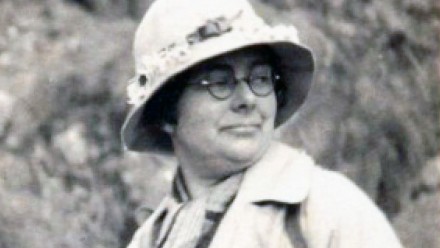Lane in the new Union Court named after our first academic and first female researcher
Dr Germaine Joplin was the first researcher appointed to the newly formed Geophysics Department at ANU in 1952. Today Dr Gernmaine has been recognised for the role she played in shaping the ANU by having one of the three streets in the revitalised Union Court named after her -Joplin Lane.
Germaine Joplin graduated in 1930 from the University of Sydney with a Bachelor of Science and First Class Honours, the University Medal in Geology, the Science Research Scholarship and the Deas-Thompson Scholarship for Minerology. Joplin took up geological studies at a time when few women pursued tertiary study. Joplin specialised in petrology with her research focusing on igneous rocks, those formed by the cooling and solidification of volcanic lava.
Her research and writing, whilst working as the Curator of the University of Sydney’s Geological Museum, gave her international recognition and she was awarded the Junior International Fellowship in Science for the year 1933-1934 by the International Federation of University Women. Joplin studied petrology under C.E. Tilley at Cambridge University where she was awarded her PhD in 1935. Returning to the University of Sydney, she took up a temporary position as acting assistant lecturer in geology. Whilst working and continuing her research she went on to study at night a Bachelor of Arts Degree and a diploma of social studies.
In 1941, the Meclay Fellowship from the Linnean Society of New South Wales, enabled her to conduct pioneering research with her petrographic studies of the Cooma region in south-eastern New South Wales.
In 1951 Dr Joplin moved to Canberra working at the Bureau of Mineral Resources. The following year she accepted a permanent research post in the newly formed Geophysics Department at ANU and was an ANU Council Member from 1969. Not only was she the first academic but the first female appointed to the Department.
Throughout her career Dr Joplin published numerous research papers and six books, she was awarded the prestigious W.R. Browne Medal for ‘distinguished contributions to the Geological Sciences of Australia’, as well as being made a Member of the order of Australia.
Dr Joplin published two textbooks on the petrography of Australian igneous and metamorphic rocks which were used by generations of geology students. These books contain beautiful illustrations of thin sections of Australian rocks, which she drew while looking down a microscope. These thin sections are stored in the ANU Earth Science collection.









